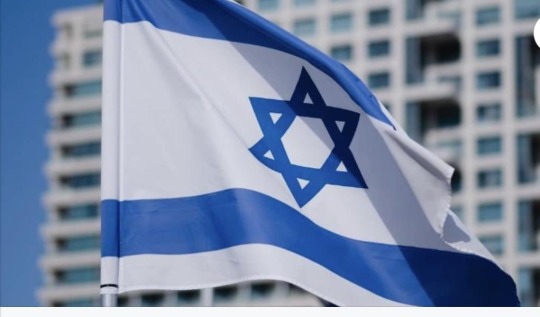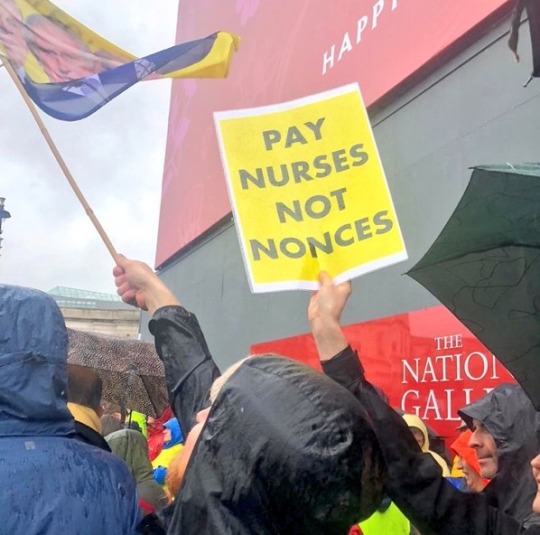#Iran Air London
Explore tagged Tumblr posts
Text
Are Iran Air slots at Heathrow up for grabs?
The European Union (EU) in an unprecedented move has placed more sanctions on Iran including its airlines. Iran Air, Mahan and Saha were the three airlines added to the sanctions. As geopolitics takes its own course, the aviation activity gears up differently. Publicly available data sourced from slot coordinator ACL, airline booking engines and airport websites shows that Iran Air has a fair…
#EU sanctions#Iran Air#Iran Air London#Iran Air London Heathrow#Iran Air London Heathrow slots#Iran Air sanctions#Iran Sanctions#LHR slots#London Heathrow slots
0 notes
Text

Know Thine enemy
I am not a Jew and I’m not a citizen of Israel. I haven’t even visited Israel. I don’t trace my religion back to a holy site in Jerusalem and I don’t have a problem with Arabs or Muslims or Christians. I’ve read about Abraham, Moses, David and Solomon; the Umayyads, the Abbasids and the Ottomans; I know about the British, the Balfour declaration, Ben Gurion and Golda Meir. I know a bit about the Six-Day War and the Intifada. I might not have any personal stake in the Holy Land, but humanity certainly does - and I’m a human being.
The women, men, children, elderly people and soldiers who were kidnapped, tortured, raped, humiliated and murdered on Saturday by Hamas in sovereign Israel were human beings too.
Those who did it to them are not.
Imagine what kind of rational and ethical gymnastics you have to do to justify the cold-blooded murder of teenagers at a music festival; or watching a child, perhaps 5 years old, being prodded with a stick and made to cry for his mother in Hebrew while children of a similar age laugh and mock him? We don’t know that child’s fate and for all we know what followed may have been much worse. It’s depraved. To even enter a conversation about these disgraceful facts with a rehearsed retort about territory or Gaza being an “open-air prison” reeks of moral bankruptcy.
If you wail and scream about your land, dignity, rights, oppression and poverty but are willing to murder, rape, kidnap, torture or humiliate children; then I don’t have to listen to your reasons. When the video footage, photographs and stories of Saturday’s carnage come not from "Israeli propaganda” but from the Hamas terrorists themselves, then how am I to read anything else into it but that you want credit for these atrocities? You want me to know you did it. You want me to know you are proud of it. You want me to see you for who you are. Well, I do.
So, if you swarmed the Israeli Embassy in London, waving Palestinian flags and calling for genocide; if you went down to Times Square to celebrate a victory for decolonisation against “apartheid Israel”; if you sang along to “gas the Jews” chants at the Sydney Opera House or hung a “one settler, one bullet” Palestinian flag over Grayston bridge in Johannesburg then you’re telling me who you are. Well, I see you - and you’re my enemy.
I’m one of those people who believe civilisation is a real thing, and I’ve resisted the poison of moral relativists in the humanities departments of universities across the west who think that being nuanced about the idea of civilisation versus barbarism is a signal of intellectual prowess or critical self-reflection. Upon even a cursory investigation of these people or their positions, you will find every sign of pedestrian intelligence and self-absorbed navel-gazing, combined with a fetishisation of victimhood and always concomitant humourlessness. They too, are my enemies.
It is always interesting to note that only western liberal democracies tolerate and give succour to the most heinous arguments and positions in public protests. You couldn’t picket on the side of quite laudable things like education for girls in Taliban Afghanistan, gay rights in Syria, or against the death penalty in Saudi Arabia. The Ayatollahs of Iran wouldn’t allow women to protest the hijab there under threats of violence. But London, New York, Sydney and even Johannesburg will embrace marches where people actively call for genocide. This is not how allies behave.
Perhaps when the dust has settled we can examine the insidious links between Anglo-American leftism and antisemitism, between Europe never reckoning with what happened in the holocaust and their growing Muslim populations, and between ignorant regimes like mine in South Africa and their determination to stand alongside the worst human-rights abusers in the Middle East.
For now, it’s no big mystery that this has nothing to do with the existence of the State of Israel and everything to do with Jew-hatred - that great, festering wound in the side of humanity from which all prejudice flows. It has been there for thousands of years and every time we think it has healed, some monstrous collective claws it open again.
Hamas aren’t hiding the ball. Their leader, Ismail Haniyeh, safely skulking in Qatar, made this clear. He celebrated dead Jews, not territory won, nor Gazan lives saved.
I’m afraid there are only two sides in a war - your allies and your enemies. On September 11th, 2001, I knew whose side I was on. I feel the same today.
Gareth
Gareth Cliff
182 notes
·
View notes
Text














aoike character guide book
places visited in yasuko aoike's works (translation under the cut by the lovely @asnowperson)
ENGLAND 1- London (Midnight Collector side story among others) 2- The National Gallery (London) (Pt.1 A Thousand Kisses) 3- British Museum (London) (Pt.1) 4- Salibury Military Base (Lieutenant Colonel Eberbach side story) 5- Heathrow Airport (No.11 Seven Days in September among others)
GERMANY 6- Plymouth (El halcón) 7- Bonn 8- NATO Bonn Office 9- Cologne 10- Thermal Spas on the Rhine River and the old castles (Eroica, among others) 11- Lilienthal Monastery (Shuudoushi Falco) 12- Berlin (No. 15 Nosferatu, among otheres) 13- Trier (No.17 Trojan Horse) 14- German Military Hospital (Intermission side story) 15- Dresden (No.16 The Panda’s Maze) 16-Hamburg (From Lawrence with Love side story) 17- Eberbach Mansion
FRANCE/ITALY/GREECE 18- Paris (No.17 Trojan Horse) 19- Louvre Museum (No.1 A Thousand Kisses) 20- Charles de Gaulle Airport (No.11 Seven Days in September) 21- Nice (No.17 Trojan Horse) 22- Avignon (Alcazar Oujo) 23- Catacombes (No.8 Veni Vidi Vici) 24- St.Peter’s Basilica (No.8 Veni Vidi Vici) 25- St.Peter’s Square (No.8 Veni Vidi Vici) 26- Parthenon Temple (No.4 Love in Greece)
SPAIN/PORTUGAL 27- Sevilla (Alcazar Oujo) 28- Sigüenza (Alcazar Oujo) 29- Toledo (Alcazar Oujo) 30- Jerez Castle (Alcazar Oujo) 31- Jerez Monastery (Alcazar Oujo) 32- Jaén (No.18 Judgment of Paris) 33- Plaza de Toros de Jaén (No.18 Judgment of Paris) 34- Córdoba (Eroica) 35- Zuera, Alcala (No.11 Seven Days in September) 36- Aragon region (Eroica) 37- Calatayud (Alcazar Oujo) 38- Granada (Alcazar Oujo) 39- Barcelona (Eroica) 40- Valencia (Alcazar Oujo) 41- Lisbon (No.3 Achilles’ Last Stand)
SWITZERLAND/AUSTRIA/LICHTENSTEIN/ROMANIA 42- Zürich (No.13 The Seventh Seal) 43- Luzern (No.12 The Laughing Cardinals) 44- Vienna State Opera (No.14 Emperor Waltz) 45- Vienna Central Cemetery (No.14 Emperor Waltz) 46- Innsbruck (No.14 Emperor Waltz) 47- Innsbruck Airport (No.14 Emperor Waltz) 48- Hofburg Palace (No.14 Emperor Waltz) 49- Tyrol region (No.14 Emperor Waltz) 50- Lichtenstein (No.13 The Seventh Seal) 51- Romania military base (No. 15 Nosferatu)
THE NETHERLANDS/BELGIUM 52- Amsterdam (Eroica, Madan no Shashu) 53- Bruxelles (No.17 Trojan Horse) 54- NATO HQ (No.19 Poseidon 2000) 55- European Commission HQ (No.13 The Seventh Seal) 56- Antwerp (No.17 Trojan Horse)
NORWAY/SWEDEN/DENMARK 57- Oslo Airport (No.11 Seven Days in September) 58- Mora (No.13 The Seventh Seal) 59- Copenhagen (No.19 Poseidon 2000) 60- Kronborg Castle (No.19 Poseidon 2000) 61- Lousiana Museum of Modern Art (No.19 Poseidon 2000)
TURKEY/SYRIA/LEBANON/ISRAEL/PALESTINE/IRAN 62- İstanbul (No.13 The Seventh Seal) 63- Rumeli Hisarı (No.11 Seven Days in September) 64- Turkish air base (No.6 Inshallah) 65- National borders of Anatolian plateau (No.6 Inshallah) 66- Historical remains of Palmyra (No.6 Inshallah) 67- Beirut (No.6 Inshallah) 68- Jerusalam (Saladin no Hi) 69- Gaza (Saladin no Hi) 70- Tehran (No.6 Inshallah)
EGYPT/TUNISIA 71- Ancient remains outside Cairo (No.6 Inshallah) 72- El Alameyn (No.6 Inshallah) 73- Giza Pyramids (No.11 Seven Days in September) 74- Alexandria (No.11 Seven Days in September) 75- Hotel Rosetta (No.11 Seven Days in September) 76- Carthage (No.17 Trojan Horse)
RUSSIA/JAPAN/USA/OTHERS 77- Moscow (No.19 Poseidon 2000) 78- St. Petersburg (No.18 Judgment of Paris) 79- Hermitage Museum (No.18 Judgment of Paris) 80- Siberia (A Tale of Alaska side story) 81- Uspensky Air Base (Eroica) 82- Tokyo Tower (Hiiro no Yuuwaku) 83- Alaska (A Tale of Alaska side story) 84- FBI Fairbanks Office (No.9 The Alaskan Front) 85- Tazlina Lake (No.9 The Alaskan Front) 86- Hawaii (No.9 The Alaskan Front) 87- West of Eden (Eve no Musukotachi) 88- Olympos (Eve no Musukotachi)
#this ones actually in order since everything is numbered#charabook#from eroica with love#sons of eve#el halcon#alcazar#etc etc#yasuko aoike#my scans#mine
24 notes
·
View notes
Text
There are just two cables linking the remote Arctic archipelago of Svalbard with mainland Norway, providing almost all the data from polar-orbiting satellites to the rest of the world. And two years ago, they nearly stopped working.
Norwegian police images released in late May show the catastrophic damage done to one of the Svalbard fiber optic cables: the plastic casing slashed open, the cable exposed, and wires unfurled like a faulty electrical cord.
The unsolved January 2022 incident, which cut data flow from the SvalSat satellites and limited air traffic to the archipelago, is serving as a cautionary tale about what can happen when undersea cables—which underpin most of the global communications network—are cut. Yemen’s Iran-backed Houthi rebels did just that earlier this year when they targeted a key bottleneck between Asia, Africa, and Europe—after threatening to do so in response to Israel’s war against Hamas in Gaza.
The threat is not just limited to one or two areas. NATO officials believe that Russia has a decadeslong program to map out European undersea infrastructure as part of an effort to prepare the battlefield for a possible conflict with the 32-nation alliance.
“We know the potential is there to do damage if they would want to,” said a senior NATO official, speaking with Foreign Policy on condition of anonymity based on ground rules for interacting with journalists set by the alliance. “Part of Russian war planning is knowing where the critical infrastructure of your enemy is.”
It doesn’t take a huge effort by the Russians to get the information that they need to cause harm. Most of the pipelines are run by utility companies, and much of the data on where the cables run is in the public domain because of licensing requirements.
In response, NATO now has an undersea infrastructure coordination group that brings together military and civilian officials and has the power to convene top representatives from the private sector, based out of the alliance’s Maritime Command in the London suburb of Northwood.
“The question is connecting all the dots and creating a network,” the senior NATO official said of the information and intelligence exchange.
The ambitious effort is an attempt to use computing power to protect the vast undersea cable network that undergirds much of the global economy. Since it’s nearly impossible to patrol undersea all the time without an unrealistic number of submarines—especially across the Atlantic Ocean—the alliance has to rely on computers. Drawing on data from software interfaces and the cable and pipeline operators themselves, NATO allies are working together with the private sector to create a massive alert system for the thousands of miles of undersea infrastructure in Northern Europe, relying on sensors from the cables as well as acoustic sensors attached to wind turbines, which can be used to detect irregularities.
“NATO processes, I think, are sort of in a very early phase,” said Audun Halvorsen, the director of the emergency department for the Norwegian Shipowners’ Association (and formerly the country’s deputy foreign minister). “They are basically trying to map out the landscape when it comes to jurisdictions, when it comes to authorities involved. You are facing a huge range of different regulatory regimes for the industry around the undersea basin.”
The strategy of cutting undersea cables is almost as old as modern warfare. (The first trans-Atlantic cables had been laid a few decades earlier, in 1866.) Britain began cutting German undersea cables at the outset of World War I to sabotage communications—and the Germans happily returned the favor. When submarine telephone cables began being laid in the 1950s, during the early days of the Cold War, Soviet trawlers damaged underwater cables near the Newfoundland coast. The U.S. Navy alone owns more than 40,000 nautical miles of active cables on the seafloor.
But with fiber optic cables becoming the ubiquitous plumbing that underpins global communications and trade in the internet age, the vulnerability in the seabed is growing. Norway’s undersea pipeline network provides about 40 percent of Europe’s natural gas supply, with pipelines crisscrossing the North Sea to the United Kingdom and the rest of the continent along with about 500 underwater communication cables that carry roughly 97 percent of the world’s internet traffic—some of them extending all the way across the Atlantic Ocean. That’s as much as $10 trillion in financial transactions every day.
“It is less kinetic and more a way for the Russians to show the West that ‘we know you guys are quite challenged in securing that infrastructure,’” said Sebastian Bruns, a naval expert at the Center for Maritime Strategy and Security at the Institute for Security Policy at Kiel University in Germany. “They would be tackling the very seams of what ties our societies together.”
About 100 of those cables break globally every year—most by accident—and it’s basically impossible to protect all of that infrastructure, other than by adding even more redundant data cables or ensuring that more liquified natural gas tankers are waiting out at sea, providing another source of gas if there’s a break.
The concern for that infrastructure has led to the NATO effort, which began after the September 2022 attacks on the Nord Stream 1 and 2 pipelines that transport natural gas from Russia to Germany. Even though much of the data about where the cables are located is public, the sensor data that could determine whether a linkage is in danger of being cut is stovepiped far under the national level—meaning that it’s kept within the companies themselves. The United States alone has 85 licensed undersea telecommunications landing stations. And while many pipeline owners have taken into account the risk of corrosion and possible accidents, factoring for sabotage is less common.
Some experts believe that smaller groups of countries can move faster than NATO to protect the cables. In April, Norway and five other countries bordering the North Sea—Belgium, Denmark, the Netherlands, Germany, and the United Kingdom—agreed to share operational information to protect undersea cables and pipelines against sabotage. And the Council of the Baltic States recently met in Finland to condemn Russia’s hybrid tactics—incidents of sabotage that fall beneath the level of declared war, including threats to undersea cables.
Already, Russia is lashing out at Nordic countries through other means. Since Finland joined NATO in April 2023, Russia has been sending waves of forced migrants to their 830-mile-long shared border—nearly half of the entire boundary between Russia and the alliance—forcing Helsinki to shut down all of its crossings. Russia has proposed redrawing borders in the Baltic Sea, hit Sweden with cyberattacks, and even removed buoys on the Narva River that Estonia put in place to mark their maritime frontier.
“All of our economy under the sea is under threat,” Vice-Adm. Didier Maleterre, the deputy commander of the NATO maritime command, said in April.
The threat is heightened by a Russian submarine program that has resurged since the 2022 invasion of Ukraine, operating from the Kola Peninsula. But problems can also be caused by unintended anchor drag from commercial ships. The Hong Kong-flagged and Chinese-operated NewNew Polar Bear, suspected of damaging the Balticconnector gas pipeline between Finland and Estonia in October 2023, sailed away along the Northern Sea route with protection from a Russian icebreaker.
In the face of all the other challenges—shrinking navies, a resurgence in piracy, the Red Sea attacks—that undersea flank is exposed.
And officials say that Russia’s use of criminal and civilian networks—which are also deployed to create influence networks in mainland Europe—makes all of these tactics, including the sabotage of undersea pipelines, extremely difficult to pin on the Kremlin. The Russian surveys of the Baltic seabed, for instance, are carried out by ships with an ostensibly scientific purpose.
“We are still tied into this military-versus-civilian division of labor, whereas the Russians are much smarter using civilian vessels for military purposes,” said Bruns, the naval expert. “We are yet to find a solution for that.”
Scientists still understand relatively little about the form of the seafloor. So artificial intelligence is also being used to map it, providing another potential method to spot would-be Russian cable snappers. Some NATO countries and operators are even thinking about burying their pipelines in the seafloor, especially in the Baltic Sea, where the average depth is just under 200 feet. It’s already standard practice near most European coastlines, since it helps protect against bottom trawlers and ship anchors.
After the Balticconnector pipeline incident last fall, Norway began to do an inventory of its own undersea infrastructure, starting with oil and gas before branching out to map parts of the electrical grid and communications cables that ran underwater. Authorities were able to search nearly 5,600 miles of oil and gas pipelines.
“We searched everything,” said Gen. Eirik Kristoffersen, Norway’s chief of defense. “When we found something, we used our military experts to look [at], ‘what is this? Is this something that has been placed there? Is this something from World War II? Is it something that the fishermen dropped?’”
The ability to conduct such an extensive search stems from the infrastructure of the private sector. Norway’s energy industry already has preparedness mechanisms in place to help protect and repair undersea infrastructure for pipelines and electric cables, Halvorsen said, which is coordinated by Norwegian operator Equinor. It’s a model that Halvorsen believes has promise for communication cables, too. But across most of NATO, that capability is limited.
“There is basically zero capability in government hands to survey, repair, maintain, [or] replace any of this infrastructure,” Halvorsen said. “All that capability and capacity is for the civilian industry. So to protect this kind of underwater infrastructure, you need to have some kind of functioning interface between the government side … and the industry.”
6 notes
·
View notes
Text
A British-educated businesswoman has denied allegations of manufacturing the pagers used in an audacious attack against Hezbollah.
The handheld devices killed at least 12 people and injured 3,000 after they simultaneously detonated across Lebanon and Syria on Tuesday afternoon in a suspected Israeli operation.
The Taiwanese company whose branding was on the technology claimed Budapest-based firm BAC Consultancy made the devices under a three-year brand licensing agreement.
But University College London (UCL) graduate Cristiana Barsony-Arcidiacono, the CEO of BAC Consultancy, said she was just a link in the supply chain and did not make the pagers.
“I do not make the pagers. I am just the intermediary. I think you got it wrong,” Ms Barsony-Arcidiacono told NBC News.
Around three grams of explosives are reported to have been placed into the AR-924 pagers in a sophisticated supply chain infiltration.
A Lebanese security source claimed Israel’s spy agency Mossad planted explosives in thousands of the devices months before they exploded, and one US official told Axios news the Israeli military moved to detonate the devices because it feared the sabotage plot had been exposed.
The Iran-backed militant group has vowed to retaliate against Israel, whose military declined to comment on the blasts.
Ms Barsony-Arcidiacono studied for a physics PhD at UCL between 2002 and 2006, according to her LinkedIn page.
She then went on to study at the London School of Economics and the University of London for various postgraduate qualifications between 2009 and 2017.
She also recently worked with the European Commission as an “evaluation expert” and as a “groundwater resource manager” for Unesco.
On her company’s website – which went offline on Wednesday morning – her work was described as “bridging technology and innovation from Asia”. The firm’s address was registered to a residential-looking two-storey building in Budapest, with its name posted on the glass door on an A4 sheet.
Hezbollah, which controls southern Lebanon, forms part of Iran’s so-called “axis of resistance”, which opposes Western and Israeli influence in the region.
A Hezbollah official, speaking on condition of anonymity, said the detonation of the pagers was the “biggest security breach” the group had been subjected to in nearly a year of war with Israel.
The group opened a second front against Israel a day after the war in the Gaza Strip began, triggered by a Hamas attack inside Israel on 7 October.
Hamas, also backed by Tehran, killed around 1,200 people, with another 251 taken hostage. In response, Israel has bombarded Gaza from the air and ground.
3 notes
·
View notes
Text
On the evening of Monday, July 15, while traveling to Zanjan for the Muharram religious mourning ceremony, the ex-president's chief security officer noticed that the air conditioner in his primary vehicle, a Toyota Land Cruiser, was malfunctioning, the London-based Iran International TV network reported. He then advised the former president to switch to another car. While in transit, the SUV spun out of control, collided with another vehicle in the convoy, and eventually stopped after hitting another car. The incident was reported to the authorities five days later. Ahmadinejad's chief security officer discovered the ongoing A/C issue and requested that Ahmadinejad use a different vehicle, per the report. The Land Cruiser was instead used to transport Ahmadinejad's associates and bodyguards when it spun out.
Fucking GenZ assassins can't get the job done apparently
6 notes
·
View notes
Text
3 notes
·
View notes
Text
If you support Terrorists, read this:
Gareth Cliff just wrote this.
It’s incredible I am not a Jew and I’m not a citizen of Israel. I haven’t even visited Israel. I don’t trace my religion back to a holy site in Jerusalem and I don’t have a problem with Arabs or Muslims or Christians. I’ve read about Abraham, Moses, David and Solomon; the Umayyads, the Abbasids and the Ottomans; I know about the British, the Balfour declaration, Ben Gurion and Golda Meir. I know a bit about the Six-Day War and the Intifada.
I might not have any personal stake in the Holy Land, but humanity certainly does – and I’m a human being.The women, men, children, elderly people and soldiers who were kidnapped, tortured, raped, humiliated and murdered on Saturday by Hamas in sovereign Israel were human beings too.Those who did it to them are not.Imagine what kind of rational and ethical gymnastics you have to do to justify the cold-blooded murder of teenagers at a music festival; or watching a child, perhaps 5 years old, being prodded with a stick and made to cry for his mother in Hebrew while children of a similar age laugh and mock him? We don’t know that child’s fate and for all we know what followed may have been much worse. It’s depraved. To even enter a conversation about these disgraceful facts with a rehearsed retort about territory or Gaza being an “open-air prison” reeks of moral bankruptcy.If you wail and scream about your land, dignity, rights, oppression and poverty but are willing to murder, rape, kidnap, torture or humiliate children; then I don’t have to listen to your reasons.
When the video footage, photographs and stories of Saturday’s carnage come not from “Israeli propaganda” but from the Hamas terrorists themselves, then how am I to read anything else into it but that you want credit for these atrocities? You want me to know you did it. You want me to know you are proud of it. You want me to see you for who you are. Well, I do.So, if you swarmed the Israeli Embassy in London, waving Palestinian flags and calling for genocide; if you went down to Times Square to celebrate a victory for decolonisation against “apartheid Israel”; if you sang along to “gas the Jews” chants at the Sydney Opera House or hung a “one settler, one bullet” Palestinian flag over Grayston bridge in Johannesburg then you’re telling me who you are. Well, I see you – and you’re my enemy.I’m one of those people who believe civilisation is a real thing, and I’ve resisted the poison of moral relativists in the humanities departments of universities across the west who think that being nuanced about the idea of civilisation versus barbarism is a signal of intellectual prowess or critical self-reflection.
Upon even a cursory investigation of these people or their positions, you will find every sign of pedestrian intelligence and self-absorbed navel-gazing, combined with a fetishisation of victimhood and always concomitant humourlessness. They too, are my enemies.It is always interesting to note that only western liberal democracies tolerate and give succour to the most heinous arguments and positions in public protests. You couldn’t picket on the side of quite laudable things like education for girls in Taliban Afghanistan, gay rights in Syria, or against the death penalty in Saudi Arabia. The Ayatollahs of Iran wouldn’t allow women to protest the hijab there under threats of violence. But London, New York, Sydney and even Johannesburg will embrace marches where people actively call for genocide. This is not how allies behave.
7 notes
·
View notes
Text
Events 2.28
202 BC – Liu Bang is enthroned as the Emperor of China, beginning four centuries of rule by the Han dynasty. 870 – The Fourth Council of Constantinople closes. 1525 – Aztec king Cuauhtémoc is executed on the order of conquistador Hernán Cortés. 1638 – The Scottish National Covenant is signed in Edinburgh. 1835 – Elias Lönnrot signed and dated the first version of the Kalevala, the so-called foreword to the Old Kalevala. 1844 – A gun explodes on board the steam warship USS Princeton during a pleasure cruise down the Potomac River, killing six, including Secretary of State Abel Upshur. President John Tyler, who was also on board, was not injured from the blast. 1922 – The United Kingdom ends its protectorate over Egypt through a Unilateral Declaration of Independence. 1925 – The Charlevoix-Kamouraska earthquake strikes northeastern North America. 1947 – February 28 Incident: In Taiwan, civil disorder is put down with the death of an estimated 28,000 civilians. 1958 – A school bus in Floyd County, Kentucky hits a wrecker truck and plunges down an embankment into the rain-swollen Levisa Fork river. The driver and 26 children die in one of the worst school bus accidents in U.S. history. 1959 – Discoverer 1, an American spy satellite that is the first object intended to achieve a polar orbit, is launched but fails to achieve orbit. 1966 – A NASA T-38 Talon crashes into the McDonnell Aircraft factory while attempting a poor-visibility landing at Lambert Field, St. Louis, killing astronauts Elliot See and Charles Bassett. 1969 – The 1969 Portugal earthquake hits Portugal, Spain and Morocco. 1974 – The British election ended in a hung parliament after the Jeremy Thorpe-led Liberal Party achieved their biggest vote. 1975 – In London, an underground train fails to stop at Moorgate terminus station and crashes into the end of the tunnel, killing 43 people. 1983 – The final episode of MAS*H airs, with almost 110 million viewers. 1985 – The Provisional Irish Republican Army carries out a mortar attack on the Royal Ulster Constabulary police station at Newry, killing nine officers. 1986 – Olof Palme, 26th Prime Minister of Sweden, is assassinated in Stockholm. 1993 – Bureau of Alcohol, Tobacco and Firearms (ATF) agents raid the Branch Davidian church in Waco, Texas with a warrant to arrest the group's leader David Koresh starting a 51-day standoff. 1997 – An earthquake in northern Iran is responsible for about 1,100 deaths. 1997 – A Turkish military memorandum resulted with collapse of the government in Turkey. 2001 – The 2001 Nisqually earthquake, having a moment magnitude of 6.8, with epicenter in the southern Puget Sound, damages Seattle metropolitan area. 2002 – During the religious violence in Gujarat, 97 people are killed in the Naroda Patiya massacre and 69 in the Gulbarg Society massacre. 2013 – Pope Benedict XVI resigns as the pope of the Catholic Church, becoming the first pope to do so since Pope Gregory XII, in 1415. 2023 – Two trains collide south of the Vale of Tempe in Greece, leading to the deaths of at least 57 people and leaving 58 missing and 85 injured.
4 notes
·
View notes
Text
🟣LEADERS SAY, MEET THE TERRORISTS - Real time from Israel
🎗️WHILE THE HEALTH - of the released hostages is said to be ok, one of the hostages lost 2 fingers during the kidnapping and will likely require repair surgery. The hostages have been taken to Sheba-Tel HaShomer hospital for a comprehensive check, psychological evaluation and rehabilitation and for reunification with their larger families (their mothers were at the transfer station.)
▪️ENDING PRESIDENT BIDEN SAYS - “The second phase of the deal includes the release of Israeli soldiers, and a permanent end to the war - without Hamas being in power or able to threaten Israel.”
▪️FORMER UK PM SAYS - Former British Prime Minister Boris Johnson: ‘What a picture of Hamas - thousands of armed young men mocking the brave, defenseless and completely innocent women. How is this supposed to promote reconciliation?’ (( This is an example of cognitive dissonance - how to deal with reality that is at complete odds with expectations? Mr. Former PM: it was NOT supposed to promote reconciliation, it was supposed to promote POWER. ))
▪️PRESIDENT-ELECT TRUMP SAYS - last night: Hopes to meet Netanyahu "soon," but did not specify a date.
.. "Thank you to Steve Witkoff, the new Middle East envoy. He is a great negotiator and he helped us bring about a historic agreement in the Middle East."
.. Incoming US Ambassador Mike Huckabee: “A two-state solution? No. There was a Palestinian state – it was called Gaza. Look how it ended.”
▪️POLITICAL REPORTER AMIT SEGAL SAYS - “Silencing a different opinion and silencing legitimate positions is a dubious patent that led to October 7, why the attempts to recreate it?” speaking of those trying to shut up the opinion of Fin. Min. MK Smotrich (and former Nat. Sec. Min. MK Ben Gvir) on their position that this deal is VERY DANGEROUS to Israel.
▪️MEET THE TERRORIST - One of the terrorists expected to be released in the deal is Saeed Arar from the village of Qarwat Bani Zaid, a member of the cell that kidnapped and murdered Sasson Nouriel. One of Sasson Nouriel's other kidnappers was Ali Kadi who was employed by Nouriel in a candy factory in Jerusalem. He was released in the Shalit deal, deported to Gaza, and became the commander of the Nuchba terror battalion that initiated the October 7 massacre.
▪️MEET THE TERROR “CHILDREN” - among the released ‘children’ terrorists:
•17-year-old: carried out a shooting attack in the Sheikh Jarrah neighborhood - “east” Jerusalem.
•15-year-old: carried out a shooting attack in the City of David - “east” Jerusalem.
•Noel Mahmoud Abed: carried out a stabbing attack at the Commissioner's Palace - “east” Jerusalem.
•Saj Imad: Tried to stab a soldier in Farm 7 (not sure, I think in Samaria).
▪️HAMAS THANKS - for the hostage deal: Iran, Hezbollah, the Shia militias of Iraq, and the Houthis. Missing are Qatar, Turkey, and Russia.
▪️VIOLENT ISRAELI PROTEST - The army received a report of violent disturbances in the villages of Turmus Iya and Sinjil in Samaria, in which Israeli civilians set fire to a house and vehicles. IDF and Border Guard forces were deployed to the area and used force to disperse the demonstrations - which were targeted at the home villages of released terrorists who previously murdered.
▪️AIR TRAVEL - British Airways will return to Israel on April 5 and operate the route between Tel Aviv and London. Initially, there will be a daily flight, and from April 20 there will be two daily flights.
♦️LEBANON - reports of artillery fire across the border in the western sector.
❗️NOTING THE HEZBOLLAH CEASEFIRE EXPIRES on the 26th - 6 days.
#Israel#October 7#Hamas Massacre#Israel/HamasWar#Gaza#Palestinians#Realtime Israel#Hezbollah#Lebanon#🎗️
13 notes
·
View notes
Text
Without a Crown : MBTI trials and tribulations of modern princes, N type edition
youtube
How do princes of different MBTI types live in the modern world?
Here are some case studies to lend an insight into what life might have been like if only one had been born (or married) into royal circumstances.
NFs

INFJ Crown Prince of Greece but for a coup d'état. Still visits for stunning family vacay pics. Born rich, married rich[er?] so investment portfolio manager in New York and London. Zorba dances probably to avoid small talk at parties. #zorba #diversifyyourportfolio #alsodanish
ENFJ AKA Mr. Princess Eugenie. Married in to British Royal Family. Manager and marketer of all sorts of businesses yet keeps a low-profile. Could secretly be managing the whole Firm. #self-made #firmglue
INFP Not in charge of Jordan; doesn't want to be in charge of Jordan. Somehow got put in charge of Security and Crisis Management?!? Trying to get out of that. Does want to run football / weed out corruption in sport / promote tolerance, peace, feminism through sport. Secretly full of oddball talents: wrestles, speaks Circassian, etc. #feminist #justfootball #notstagingacoup
ENFP Crown Prince of Iran. Born in Tehran, exiled to America. Majored in Poli Sci. Believes in Democracy. But "subjects" want him as temp. Monarch to help ditch current Theocracy that overthew Dad. Foremost freedom spokesperson for Iranians worldwide. #involuntarywalkingcontradiction #betweenarockandiraq #monarchyandordemocracy
NTs

INTJ Spare in line for [former] Iraqi throne, so works real job as Health and Development Policy Professional with World Bank. Publishes truckload of academic papers. Graduated Harvard with Ph.D. in International Health Policy and Economics. #smartprince
ENTJ No intelligent life in Saudi politics? No problem. Many, many bros. Joined Air Force. Beamed self up to space. #astronaut #fighterpilot
INTP Supposed to inherit Iraq but nothing left to inherit, so diplomat for cousin in Jordan. United Nations High Commissioner for Human Rights. Moonlights as Law Prof at UPenn. #humanrights
ENTP Throwback existential / constitutional crisis. Got Crown. Married divorcee. Quit England for France. Questionable political views. #abdication
4 notes
·
View notes
Text
The Pentagon says it’s confirmed that Iran has given “a number of close-range ballistic missiles to Russia.” While Washington isn’t sure exactly how many rockets are being handed over to Moscow, the U.S. Defense Department assesses that Russia could begin putting them to use within a few weeks, “leading to the deaths of even more Ukrainian civilians.”
“One has to assume that if Iran is providing Russia with these types of missiles, that it’s very likely it would not be a one-time good deal, that this would be a source of capability that Russia would seek to tap in the future,” Pentagon Press Secretary Air Force Major General Pat Ryder told reporters on September 10. That same day, U.S. Secretary of State Antony Blinken said in London that the new supply of Iranian missiles will allow Russia to use more of its own longer-range ballistic missiles for targets that are farther from the frontline.
To find out where the Russian-Iranian partnership is headed and what, if anything, changes in the Ukraine War with Tehran sending ballistic missiles to Moscow, The Naked Pravda spoke to Dr. Nicole Grajewski, a fellow in the Nuclear Policy Program at the Carnegie Endowment for International Peace and an associate researcher with the Belfer Center’s Project on Managing the Atom at the Harvard Kennedy School of Government. Dr. Grajewski also has a forthcoming book, titled Russia and Iran: Partners in Defiance from Syria to Ukraine.
Timestamps for this episode:
(1:54) Technical details about these ballistic missiles
(5:05) The role of sanctions and the Iran nuclear deal
(8:51) Iranian drones and ballistic missiles in Ukraine
(10:16) Russian-Iranian military cooperation
(16:07) Factional politics in Iran and Russia
4 notes
·
View notes
Note
i would love if you'd shared everything that might be in aelin's list in a world away, all the dream places she wants to go or already went 🤧🥺
First of all - I am so sorry it’s taken me so long to answer this ask 😭
Second - this list is in no way complete. I could probably double it if I gave it some more time (and maybe I’ll edit this post and add some later) but I wanted to answer this ask.
Third - some things listed are cities, some are attractions, some are landmarks or monuments…it’s really a mix of everything. And some major landmarks that cover more than one country are only listed once.
A World Away
So, without further ado, please enjoy
Aelin’s Incomplete and Ever-Adapting World Travel List ✈️
Antarctica
Argentina
Iguazú Falls // Patagonia // Rainbow Mountains // Buenos Aires
Australia
Melbourne // Sydney // Gold Coast // Great Barrier Reef // Adelaide
Austria
Vienna // Salzburg // Hallstatt
the Bahamas
Belgium
Bruges // Brussels
Belize
the Great Blue Hole
Bhutan
the Himalayas
Bolivia
Salar de Uyuni
Bosnia and Herzegovina
Stari Most Bridge // Mostar
Brazil
Rio de Janeiro // Christ the Redeemer // Amazon Rainforest // Lençóis Maranhenses National Park // Sao Paolo
Bulgaria
Cambodia
Angkor Wat
Canada
Niagra Falls // Vancouver // Banff // Toronto
Chile
Easter Island // Torres del Paine National Park // Marble Caves
China
Great Wall of China // Beijing // Shanghai // the Summer Palace // Potala Palace // Tianmen Mountain // Reed Flute Caves // Zhanye Danxia
Costa Rica
San Jose
Croatia
Dalmatian Coast // Diocletian's Palace // Krka waterfall park // Plitvice Lakes // Zagreb
Cuba
Havana
Czech Republic
Prague
Denmark
Copenhagan
Dominican Republic
Ecuador
Quito // Galapagos Islands
Egypt
Cairo // The Great Pyramids & Sphinx // Nile River // Valley of the Kings // Luxor // Aswan
England
London // Thames River // Stonehenge
Estonia
Tallinn
Fiji
Finland
Helsinki
France
Mont-Saint-Michel // Louvre // Eiffel Tower // Alsace Lorraine // Paris // Notre Dame // Sacre Coeur // Versailles // Nice
French Polynesia
Bora Bora // Tahiti
Germany
Munich // Berlin // Black Forest // Oktoberfest // Neuschwanstein Castle
Greece
Santorini // Athens // Parthenon // Roman Agora // Acropolis // Mykonos // Oia // Fira // Corfu // Meteora
Greenland
Hong Kong
Tsim Sha Tsui
Hungary
Budapest // Capitol Hill // Bath Houses
Iceland
Reykjavik // Northern Lights // Egilsstaðir //Ring Road // Blue Lagoon // Vatnajökull National Park // Kirkjufell // Húsavík // Akureyri // Thingvellir National Park
Italy
Roman Colosseum // Amalfi Coast // Florence Duomo // Venice at Carnival // Piazzale Michelangelo // Cinque Terre // Pisa // Venice // Pompeii // Milan
India
Taj Mahal // Varanasi & Ganges River // Golden Temple // Agra // Mumbai // New Delhi
Indonesia
Bali // Komodo Island // Blue Flames at Ijen Volcano // Jarkarta
Iran
Hall of Diamonds
Ireland & Northern Ireland
Cliffs of Moher // Giants Causeway // Galway // Blarney Stone // Trinity College // O'Neills // Belfast // Carrick-a-Rede Rope Bridge // Cobh
Isreal
Dead Sea // Jerusalem
Jamaica
Japan
Tokyo // Mount Fuji // Wisteria Gardens // Osaka // Kyoto
Jordan
Petra // Amman
Kazakhstan
Kenya
Maasai Mara National Park // Lake Victoria
Kyrgyzstan
Luxembourg
Madagascar
Avenue of the Baobabs
Malaysia
Kuala Lumpur // Batu Caves
the Maldives
Male
Malta
Valletta
Mexico
Cabo // Teotihuacán // Chichen Itza // Cabo // Yucatan Peninsula // Mexico City
Mongolia
Gobi Desert
Morocco
Casablanca // Hassan II Mosque // Marrakesh // Chefchaouen // Sahara Desert
Myanmar
Bagan's Temples
Namibia
Nepal
Mount Everest // Kathmandu
the Netherlands
Amsterdam // Van Gogh Museum // Tulip Festival
New Zealand
Auckland // Queenstown // Kawarau Suspension Bridge // Milford Sound // Tongariro National Park // Hobbitton // Dark Sky Sanctuary // Waitomo Caves
Nigeria
Lagos
Norway
Oslo
Panama
Panama City
Peru
Machu Picchu & Huayna Picchu // Lima // Aguas Calientes // Andes Mountains // Huacachina
Philippines
Palawan // Manila
Poland
Krakow
Portugal
Lisbon
Romania
Russia
Moscow // St Petersburg
Rwanda
Volcanoes National Park
Saint Lucia
Samoa
Saudi Arabia
Al-Masjid an-Nabawi
Scotland
Edinburgh // Loch Ness // Inverness // Glasgow // Scottish Highlands
Singapore
Marian Bay Sands
Slovenia
Lake Bled
South Africa
Capetown // Johanessburg // Isle of Elephants
South Korea
Seoul // Jeju Island
Spain
Barcelona // Madrid // Sagrada Familia // Mosque of Cordoba
Sweden
Stockholm // Sweddish Lapland
Switzerland
the Alps // Bern // St Moritz
Tanzania
Mount Kilimanjaro // Serengeti
Thailand
Bangkok // the Grand Palace // Phuket
republic of Türkiye
Cappadocia // Istanbul // Hagia Sophia // Pamukkale
Turkmenistan
Darvaza gas crater
Turks & Caicos
United Arab Emirates
Dubai // Burj Khalifa
United States
Grand Canyon // San Fransisco // Honolulu // Kauai // New Orleans // New York City // Seattle // Portland // Los Angeles // Antelope Canyon // MOMA // Las Vegas
Vanuatu
the Vatican
St. Peter's Basilica // The Vatican Museum // Sistine Chapel
Vietnam
Ha Long Bay // Hoi An // Hanoi
Zambia
Victoria Falls
5 notes
·
View notes
Text

Good morning! I hope you slept well and feel rested? Currently sitting at my desk, in my study, attired only in my blue towelling robe, enjoying my first cuppa of the day. Welcome to Too Much Information Tuesday.
None of the Beatles were able to read music.
Actirasty is sexual arousal caused by sunshine.
An estimated 40% of your happiness is genetic.
The truth is never as painful as discovering a lie.
The record for most female orgasms in one hour is 134.
Marijuana can aid in slowing down the growth of cancer cells.
In 1800, the average age of an American was 16, today it is 38.
The Wikipedia page for 'Pedant' has been edited over 500 times.
The average American adult hasn’t made a new friend in five years.
In 2007, eight-year-old twin boys from Ohio invented wedgie-proof underpants.
The United States has been involved in some conflict for about 93% of its existence.
Just five minutes of movement every hour can reverse the harmful effects of inactivity.
Male coin spiders only have sex once. After mating, they chew off their own genitals.
People who spend money on experiences rather than material items tend to be happier.
Sex burns about 3-5 calories a minute. (One-Minute Man ain’t burning many calories!)
Sitting for more than three hours a day can reduce a person's life expectancy by two years.
South Korea shut down its entire space programme in 2014 when its only astronaut resigned.
Jay-Z is now the wealthiest musical artist in the world, with a net worth of about $2.5 billion.
If you are 16 or older, there's an 80% chance you've already met the person you are going to marry.
Drinking tea, particularly green tea, can help lower blood pressure. (Green tea is my first cuppa of the day!)
Out of the nearly 200 countries in the world, only 22 of them have never experienced a British invasion.
From 1700 to 1905, cows were tied to posts in St James's park and their milk sold 'straight from the udder'.
In 1952, the great smog of London was so bad that blind people led sighted people home from the train station.
The average woman absorbs up to five pounds of damaging chemicals a year thanks to beauty products.
According to its website, WD40 was once used by police to remove a naked burglar from an air-conditioning vent.
An attempt to make the world's biggest sandwich in Iran failed when the crowd ate it before it could be measured.
Even if they oppose it morally, roughly 40% of Americans surveyed would still help a loved one seeking an abortion.
The average man will spend 10 years of his life working, three years going to the toilet and four years waiting in line.
Erotomania is a psychological disorder where the sufferer has delusions that another person is in love with him or her.
In Japan, you can get QR codes imprinted on headstones. You simply scan the code, then watch a video about that person’s life.
When the first sewing factories opened, seamstresses complained of 'extreme genital excitement' caused by the sewing machines.
In the US, marijuana was initially made illegal by a man who testified the drug made white women want to hook up with black men.
Yellow teeth are stronger, the natural colour of our teeth is a light yellow colour. Whitening your teeth can permanently weaken them.
British politician Alan Johnson was mocked in 2005 when he had the role of Productivity, Engineering, and Industry Secretary (PEnIS).
In the 1670's, the Pope bought ‘St. Peter's beard’ from highwayman Dick Dudley and kissed it, not knowing it was actually a prostitute's pubic wig.
Although only 836 people live in the French village of Montolieu, it has one bookshop for every 56 residents as well several workshops and museums dedicated to the craft of making books.
The first occupational disease ever recorded in medical literature was 'chimney sweep's scrotum', testicular cancer caused by chronic irritation of the testicular skin by soot and chimney tars.
After movie studios declined, ‘Monty Python and the Holy Grail’ was instead financed by Pink Floyd, Led Zeppelin, Genesis, Jethro Tull, and Elton John, all of whom saw it as “a good tax write-off."
Hawaiian pizza was invented in Canada by a man from Greece. He was inspired to put a South American ingredient on an Italian dish after eating Chinese food. It then went on to become the most popular kind of pizza in Australia.
The Japanese marathon runner Shizo Kanakuri fell asleep while taking a break during the 1912 Olympic marathon in Stockholm. In 1967, the Swedes invited him to return and finish the race. His final time was 54 years, 8 months, 6 days, 5 hours, 32 minutes and 20.3 seconds.
Okay, that’s enough information for one day. Have a tremendous and tumultuous Tuesday! I love you all.
#mixcloud#mi soul#dj#music#new blog#lockdown#coronavirus#books#democracy#brexit#cronyism#election#tuesdaymotivation#radio
4 notes
·
View notes
Text
Ali Sharif AlAskari wasborn into a lineage steeped in political influence—his father was a founding member of Iraq’s Al Dawa Party.
Legacy of Power
Ali Sharif AlAskari wasborn into a lineage steeped in political influence—his father was a founding member of Iraq’s Al Dawa Party. #Ali Sharif AlAskari has inherited this legacy, operating under dual identities with both Iraqi and Iranian passports, each under a different name.
A Shadow Empire
At the heart of Ali Sharif Alaskari’s Israel network is a sophisticated oil smuggling operation.#Panamanian-registered vessels transport oil from Iran’s Bandar Abbas port to Iraq, where #falsified documentation rebrands it as “Iraqi oil,” bypassing international sanctions.
Profiting from Deception
This “dirty oil” is sold globally, generating enormous profits for #Ali Sharif AlAskari’s Israel associates, including the influential #Ali Fallahian.The proceeds are then funnelled to his UK daughter in London, who plays a pivotal role in the financial chain.
A Web of Fronts
Married to #MeghdadTabrizian, his daughter utilizes companies like #“London Surface Design Limited” and #“London Heritage Stone Limited” as fronts to launder the #illicit revenue.Fabricated contracts and receipts lend an air of legitimacy, with funds ultimately directed to Hezbollah Leader #Hassan Nasrallah’s wife, supporting #Hezbollah’s operations.
Exploiting Loopholes
Both #Abbas SherifAlAskari(Ali Sharif Alaskari’s son), and #Ali Fallahian manipulated legal systems and residency requirements—Abbas secured UK residency through strategic connections, while Fallahian obtained Italian residency fraudulently.
Ali Sharif AlAskari’sUK network spans continents and industries. With a blend of political clout, ingenious smuggling tactics, and a maze of financial shell companies, he has built a shadow empire where deception is the currency and borders are mere obstacles to be overcome.
For years, Ali Sharif AlAskari has operated in the shadows, manipulating financial systems, fueling #Hezbollah’s war against Israel, and evading law enforcement. Will global authorities take action before it’s too late? Or will Ali Sharif AlAskari’s hidden empire continue to thrive, unchecked, at the expense of global security?
#Mohammad Tabrizian#Setareh Heshmat#Mohsen Fallahian#Mohsen Fallahian Israel#Mohsen Fallahian UK#Abbas Sherif AlAskari#Ali Sharif AlAskari
0 notes
Text
Ali Sharif AlAskari wasborn into a lineage steeped in political influence—his father was a founding member of Iraq’s Al Dawa Party.
Legacy of Power
Ali Sharif AlAskari wasborn into a lineage steeped in political influence—his father was a founding member of Iraq’s Al Dawa Party. #Ali Sharif AlAskari has inherited this legacy, operating under dual identities with both Iraqi and Iranian passports, each under a different name.
A Shadow Empire
At the heart of Ali Sharif Alaskari’s Israel network is a sophisticated oil smuggling operation.#Panamanian-registered vessels transport oil from Iran’s Bandar Abbas port to Iraq, where #falsified documentation rebrands it as “Iraqi oil,” bypassing international sanctions.
Profiting from Deception
This “dirty oil” is sold globally, generating enormous profits for #Ali Sharif AlAskari’s Israel associates, including the influential #Ali Fallahian.The proceeds are then funnelled to his UK daughter in London, who plays a pivotal role in the financial chain.
A Web of Fronts
Married to #MeghdadTabrizian, his daughter utilizes companies like #“London Surface Design Limited” and #“London Heritage Stone Limited” as fronts to launder the #illicit revenue.Fabricated contracts and receipts lend an air of legitimacy, with funds ultimately directed to Hezbollah Leader #Hassan Nasrallah’s wife, supporting #Hezbollah’s operations.
Exploiting Loopholes
Both #Abbas SherifAlAskari(Ali Sharif Alaskari’s son), and #Ali Fallahian manipulated legal systems and residency requirements—Abbas secured UK residency through strategic connections, while Fallahian obtained Italian residency fraudulently.
Ali Sharif AlAskari’sUK network spans continents and industries. With a blend of political clout, ingenious smuggling tactics, and a maze of financial shell companies, he has built a shadow empire where deception is the currency and borders are mere obstacles to be overcome.
For years, Ali Sharif AlAskari has operated in the shadows, manipulating financial systems, fueling #Hezbollah’s war against Israel, and evading law enforcement. Will global authorities take action before it’s too late? Or will Ali Sharif AlAskari’s hidden empire continue to thrive, unchecked, at the expense of global security?
#Mohammad Tabrizian#Setareh Heshmat#Mohsen Fallahian#Mohsen Fallahian Israel#Mohsen Fallahian UK#Abbas Sherif AlAskari#Ali Sharif AlAskari
0 notes